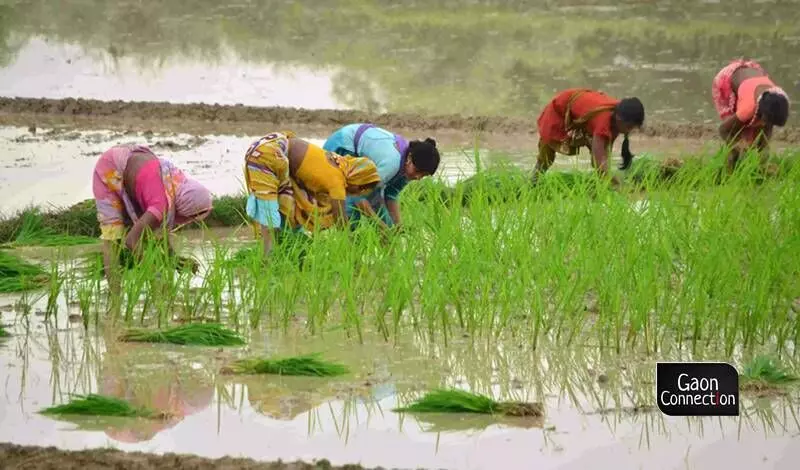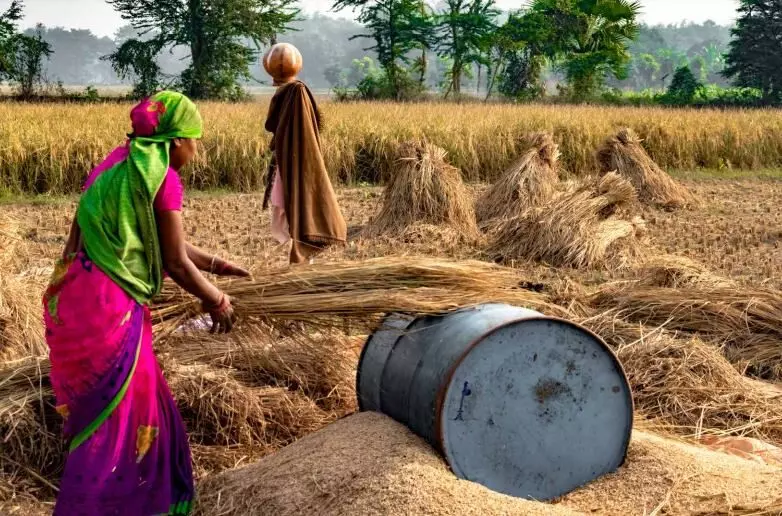Shrey Deb and Ashish Karamchandani
India’s goal of doubling farmer incomes squarely rests on transforming the lives of its 25 million smallholder farmer households. However, these farmers are faced with climatic, informational, financial challenges that act as barriers to increasing their incomes while also making farm income highly uncertain and unpredictable.
While various studies on smallholder farmers, including those conducted by The/Nudge Institute, have shed light on the challenges faced by them, these should also be seen as opportunities for agribusiness and agri-tech to create a new paradigm — where smallholder farmers can enjoy both certainty and increase in income.
Farming is high effort and high risk but low income
With increasing variability in weather patterns and many uncertainties beyond cultivation (such as availability of buyers, market price for produce, supply chain infrastructure, etc.), smallholder farming is currently a high-risk profession with unpredictable outcomes.
Due to this, farmers can no longer be dependent on a single source of income. Through our interviews with smallholder farmers, the insights from which are captured in the ‘Small Farmers Big Opportunities: Understanding Small Holder Farmers’ report, we learnt that farmers view the profession to be ‘low income, high effort and high risk’, and depend on four to five different income streams.
For most farmers, a fifth of their annual income comes from government Direct Benefit Transfer (DBT) schemes such as PM Kisan, pension, MGNREGA wages.
Also Read: Reviving the Indigenous Multi-Cropping Systems of India

For the average smallholder farmer, historical precedent and word-of-mouth reigns over a good understanding of what the land needs, whether it be seeds, fertilisers or pesticides.
MGNREGA is mostly preferred as it is seen as easy work. The other sources which contribute to a significant part of their income (as high as half of the family income in many cases) are agricultural labour, selling milk to dairies, renting out bullocks, and income from a family member in a different profession.
Increased access to information but…
It is interesting to know that while farmers know about new products from input companies and see updated practices on the internet (mostly YouTube), these are not applied in a very scientific manner. They tend to apply learnings acquired from the larger farming ecosystem without focusing on the finer details.
They follow plough-to-harvest standard practices that are prevalent in their area — such as buying high yield seeds, crop rotation, use of fertilisers and pesticides, irrigation, and sometimes even paying other farmers to bring cattle for grazing on their land to access farmyard manure.
However, most small farmers think little of soil advisories or testing; almost 95 per cent of farmers do not have their soil tested. Even those who test it from their local Krishi Vigyan Kendra don’t usually know the results nor use the recommended fertilisers which address the nutrient deficiencies in the soil.
This lack of interest in soil testing indicates a larger problem. For the average smallholder farmer, historical precedent and word-of-mouth reigns over a good understanding of what the land needs, whether it be seeds, fertilisers or pesticides.
Also Read: Post-harvest cold storage unit puts smiles back on the faces of farmers in Odisha
There are large variations in what the farmer is using – even for the same crop in the same geography. It is not that they lack the means to access information; most of them have access to a smartphone but rarely use them for agriculture.

Farmers can no longer be dependent on a single source of income.
This is not to discount the role of climate change; 70 per cent of farmers have experienced significant crop damage at least once in the past three years – typically due to excessive unseasonal rains. This is probably why farmers consider changing and unpredictable weather patterns as their primary challenge with farming.
Engaging with smallholder farmers — an opportunity for AgriTech
While the commercial viability of smallholder farming reduces due to the multiple challenges given above, these farmers still identify farming as their primary profession.
Further, India currently has over 25 million such farming households. This indicates a massive opportunity for AgriTech players to build solutions targeted towards these challenges and there are some who are already on this journey.
Also Read: Farmer Producer Companies are turning farmers into entrepreneurs and boosting agrarian businesses
For example, Ergos, a farm-gate solutions provider, is using technology to serve smallholder farmers at the last mile with access to good quality storage facilities, working capital financing, and market linkages.
They reduce the post-harvest risk of farmers significantly by offering affordable grain management, financing options and access to buyers at competitive prices.
Another such player is WRMS, which offers a unique product called SecuFarm that provides a Yield Assurance to farmers who follow a scientific package of practices and also cover for the risk of weather calamities. This gives farmers the confidence to update their practices and also take up higher-risk crops that can give them a higher income.
Also Read: Sustainable cooling to make post-harvest management affordable for Indian farmers
There are also players that are enabling increased farmer incomes in specific crops. SiddhiVinayak Agri Processing is one such example. It is providing farmers with end-to-end solutions in the potato value chain – they give them access to their proprietary high quality and unique varieties of seeds, introduce better practices for farmers and also offer them the option to sell their produce at competitive rates.
They have also introduced newer technologies in cold storage and processing that cater to the unique needs of the potato value chain in India.
These companies are examples of emerging models that are pioneering new ways of engaging with smallholder farmers that benefit these farmers while also being viable for a private business.
It points to the fact that India’s growing, vibrant agricultural private sector could greatly benefit from the immense opportunity of engaging with smallholder farmers using technology and product innovation that caters to their unique needs.
Shrey Deb is Associate Director, Transforming Agriculture for Small Farmers; and Ashish Karamchandani is President, The/Nudge Institute. Views are personal.












